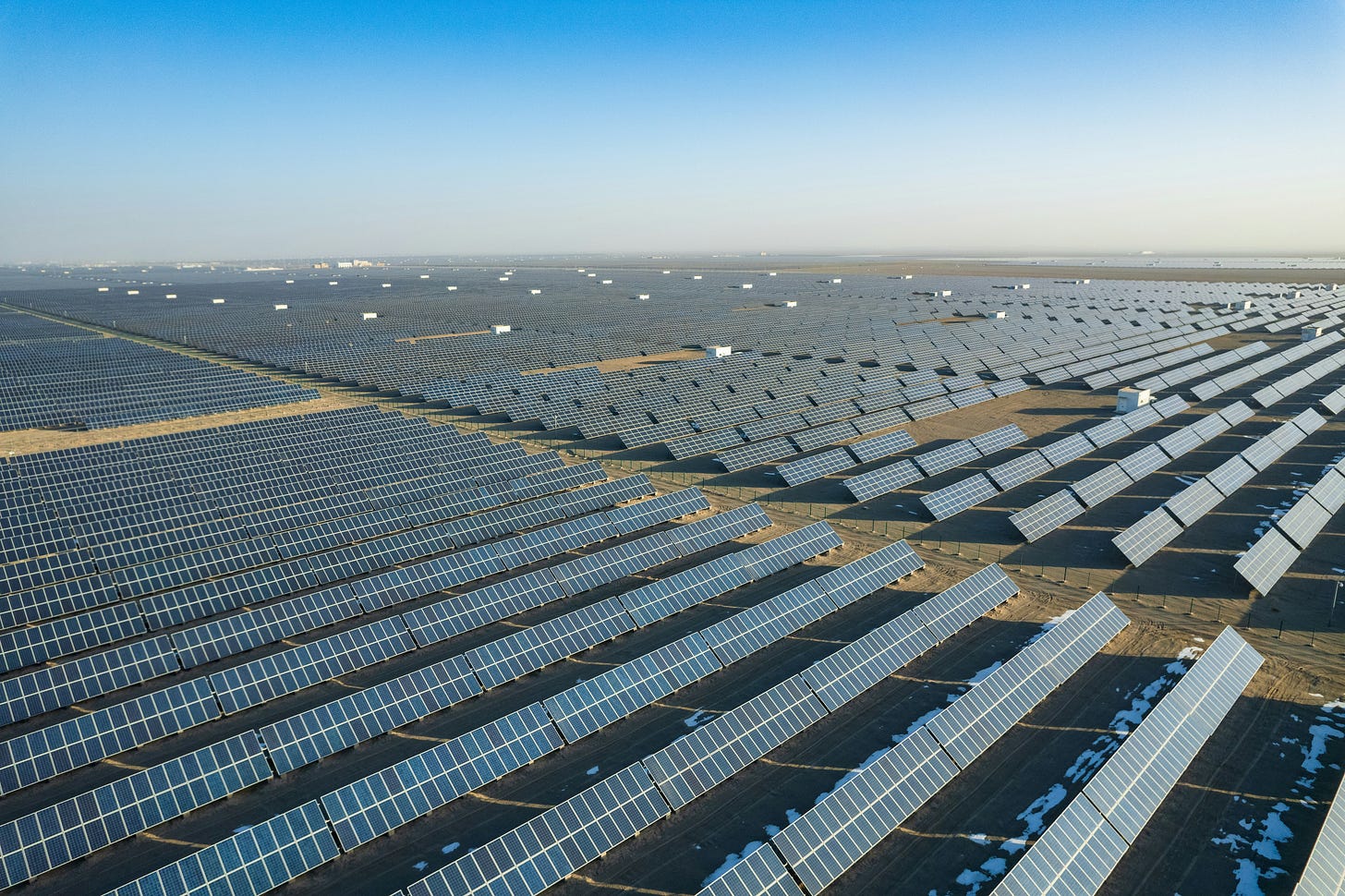Welcome back to Decouple, a weekly podcast about energy, technology, and the planet, with interviews by Chris Keefer. Watch on YouTube, Spotify, or Apple.
This week, we look beyond the physical infrastructure supporting our lives to the owners taking over that infrastructure: asset managers. Brett Christophers, an author, professor, and economic geographer at Uppsala University in Sweden, joins me to explore the troubling transformation of infrastructure ownership in today's economy. From housing to energy to water, massive asset management firms like Blackstone and Brookfield have positioned themselves more and more between citizens and essential services, extracting wealth while taking minimal risk. Christophers explains how this shift from public to private control has reshaped our relationship with everyday infrastructure, particularly as we attempt to transform our energy supplies. He argues that the profit-driven approach of these financial giants is at odds with the public good, creating a system where even as things like renewable technology get cheaper, their deployment slows due to insufficient returns for investors.
Watch now on YouTube.
We Talk About
The historical shift from the post-war “golden era” of capitalism to today's asset management society
How privatization of infrastructure has failed to deliver promised efficiencies and cost savings
The business model of asset managers and how they shift risk away from themselves
Why asset managers buy housing in areas with shortages rather than solving the problem
The role of leverage and debt in asset management acquisitions
How the marketization of electricity has created challenges for the renewable energy transition
The conflict between keeping electricity prices low for consumers while ensuring sufficient profits to attract investment
How the changing macroeconomic environment, particularly rising interest rates, has affected investment in renewables
Deeper Dive
The public-private split is central to how we build, own, and run the infrastructure that keeps society on the rails. In the early days of modern infrastructure, private corporations chartered by governments led much of its design and construction as a way to balance public benefit and private rewards. Christophers traces the path from the days of public ownership of this infrastructure to today's asset management society, from the “golden age” of post-war capitalism to the present day.
“One thing that has been most different in recent decades has been the shift to private ownership.”
According to Christophers, the infrastructure that plays crucial roles in daily life— transportation, telecommunications, energy, water, etc.—began to shift from public to private control in the late 1970s in the United Kingdom, with this trending then spreading to most of the West.

The promise of privatization was greater efficiency and better service at lower cost. To Christophers, the evidence tells a different story. “The only sector where consumers have gotten a better deal post-privatization than pre-privatization is telecommunications,” he says. Even there, he argues the gains came from new mobile technology creating competition, not from privatization itself. According to Christophers, for most infrastructure privatization has led to higher prices without corresponding improvements in service.
“These companies, what they're specialists in is… divorcing themselves from that assumption of risk, making sure that any risk that exists is shouldered by other parties.”
The rise of asset managers like Blackstone, Brookfield, and Macquarie has taken this problem to new heights. To Christophers these firms aren't builders so much as extractors: they use other people's money to buy existing infrastructure, squeeze out maximum profits over a short period, then sell to the highest bidder. When these firms buy infrastructure, they except to sell it in just a few years, creating perverse incentives for maintenance and pricing.
What happens to infrastructure under this model? Christophers uses a water system as an example: When asset managers buy municipal waterworks, knowing they'll sell in a few years, they have no reason to fix leaky pipes that would yield benefits decades later. They patch things up at minimum cost to keep problems at bay until they can sell. This short-term profit focus contrasts sharply with public ownership, which Christophers argues is better incentivized to take the long view. The asset managers aren't even using their own money: typically only 1-2% of investment funds come from their pockets, with the rest from pension funds, sovereign wealth funds, and other investors, according to Christophers. Yet they structure deals to shield themselves from risk while reaping outsized rewards.
Christophers also brings up housing. He argues these firms don't solve housing shortages but rather seek them out. “What they actually look for when they are looking for places to buy housing is places with housing shortages,” Christophers says, “because they know that housing shortages are what keep the upward pressure on rent.” When new construction is coming, they take it as a sign to sell. To Christophers, the notion that massive asset managers will solve housing crises is nonsense when their business model depends on those very shortages continuing.

In an example closer to home for Decouple than homes, the energy transition reveals another troubling pattern. At Decouple we are no strangers to how private finance can clash with public needs. Christophers’ book The Price is Wrong expands on this disconnect in the context of renewable energy: even though it has never been cheaper, its deployment is slowing in much of the West. The causes trace back to any number of reasons, but to Christophers, the main issue is profit: “Let's look at renewables not through the lens of price, but through the lens of profit.”
Without subsidies, developing renewable energy is a low-return, volatile business. This matters because most governments outside China expect the private sector to drive the energy transition. They might provide tax credits or subsidies, but they've abandoned the public investment model that built our original power systems. If profitability isn't attractive enough, the transition stalls.
To Christophers, competition drives this problem deeper. In liberalized electricity markets, renewable providers compete mainly on price, pushing returns down to minimal levels. Unlike the oil industry with its OPEC cartel to maintain prices, renewables have no mechanism to ensure sufficient profits. Governments face an impossible choice. They want low electricity prices for consumers but need high enough profits to attract private investment. As Christophers puts it, they're “caught between a rock and a hard place... constantly trying to thread the needle between these two fundamentally contradictory prerogatives.”
The changing macroeconomic environment has made things worse. When interest rates were near zero between 2010 and 2020, renewable investments offering steady 5-7% returns looked attractive to asset managers, says Christophers. Now, with higher bond returns available, renewable energy seems less appealing. Asset managers are telling governments: if you want us to build this infrastructure, you need stronger subsidies. Is there any stronger evidence of the fundamental flaw in relying on profit-seeking firms to fulfill public needs?
Support Decouple
Unlike asset managers, Decouple is not profit-hungry. We are entirely supported by individual or charitable contributions through Substack or our fiscal sponsor. If you find our work valuable to you, please consider pledging or donating today.
Keywords
rentier capitalism, asset management, privatization, infrastructure ownership, energy transition, renewable energy, Blackstone, financialization, housing crisis, electricity markets
Note: This post was made in part with the help of modern AI.












